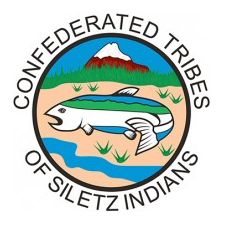The Confederated Tribes of Siletz Indians is a federally recognized confederation of 27 bands, originating from Northern California to Southern Washington. The Confederated Tribes of Siletz Indians include Clatsop, Chinook, Klickitat, Molala, Kalapuya, Tillamook, Alsea, Siuslaw/Lower Umpqua, Coos, Coquelle, Upper Umpqua, Tututni (including all the lower Rogue River bands and those extending up the coast to Floras Creek and down to Whales Head), Chetco (including all of the villages from Whales Head to the Winchuck River), Tolowa, Takelma (including the Illinois Valley/mid-Rogue River and Cow Creek peoples), Galice/Applegate and Shasta. Each of these Tribes has a unique individual history, culture and legal relationship with the federal government, which was brought to be incorporated into the Confederated Tribes of Siletz Indians. Ancestors of the Confederated Tribes of Siletz spoke at least 10 different base languages. Termination was imposed upon the Siletz by the United States government in 1955. In November 1977, they were the first Tribe in Oregon and second in the United States to be fully restored to federal recognition. The Tribe manages a 3,666-acre reservation located in Lincoln County, Oregon.
Confederated Tribes of Siletz Indians
